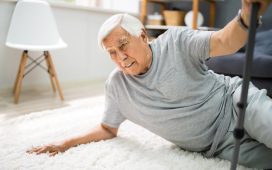And, physical activity associated with improvements in depression and mental and physical HRQoL after RYGB
WEDNESDAY, Nov. 25, 2020 (HealthDay News) — Characteristics of satisfaction with Roux-en-Y gastric bypass (RYGB) have been identified, and physical activity (PA) is associated with improved quality of life after RYGB, according to two studies published online Nov. 24 in the Annals of Surgery.
Gretchen E. White, Ph.D., from the University of Pittsburgh School of Medicine, and colleagues examined change in overall satisfaction with RYGB surgery at three to seven years after surgery among 1,423 participants who underwent RYGB. The researchers observed a significant increase in the percentage of participants who were not satisfied with RYGB surgery, from 15.4 to 23.0 percent at three and seven years after surgery, respectively. Independent predictors of not being satisfied with surgery included preoperative younger age, lower body mass index, higher percent weight loss needed to reach dream weight, lower physical and mental health status, and less social support.
Wendy C. King, Ph.D., from the University of Pittsburgh Graduate School of Public Health, and colleagues examined the correlation of PA with changes in depressive symptoms and mental and physical health-related quality of life at seven years following RYGB in a cohort of 646 patients. The researchers observed dose-response associations between steps, sedentary behavior (inverse), and moderate-to-vigorous intensity PA quartiles with improvements in each of the scores (Beck Depression Inventory [BDI], Short-Form 36 Mental Component Summary [MCS], and Physical Component Summary [PCS]). In the highest versus the lowest steps quartile, the mean improvements in the BDI, MCS, and PCS scores were 1.9 (95 percent confidence interval, 1.0 to 2.8), 3.1 (95 percent confidence interval, 1.5 to 4.7), and 4.0 (95 percent confidence interval, 2.7 to 5.4) points higher, respectively.
“There needs to be more systemic support to help patients increase their activity level and maintain an active lifestyle postsurgery,” King said in a statement.
Abstract/Full Text – White (subscription or payment may be required)
Abstract/Full Text – King (subscription or payment may be required)
Copyright © 2020 HealthDay. All rights reserved.








